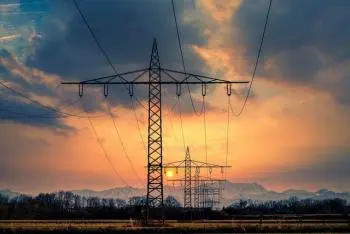
High electrical voltage is a fundamental force in our modern society, although it often goes unnoticed.
This form of electricity is essential for the efficient transmission of electrical energy over long distances, allowing us to turn on our lights, power our computers, and keep countless devices and systems running.
High electrical voltage refers to a level of voltage significantly higher than that we use in our homes and businesses. While electricity in our household outlets is typically in the range of 110 to 240 volts, high voltage involves much higher electrical voltages, often in the range of thousands or even millions of volts.
What is high electrical voltage?
"High electrical voltage" refers to voltages significantly higher than the voltage levels used in everyday applications. While precise definitions vary by regulations and location, high voltage generally falls in the range of 69 kV to 230 kV.
High voltage is used in the efficient transmission of electricity over long distances, minimizing energy losses during transportation. It is also used in industrial and high-power applications, such as in high-voltage generation facilities and transmission lines.
High voltage generation
To understand how high electrical voltage is generated, we must first consider the generation of electricity in power plants. Most power plants use generators that convert mechanical energy into electrical energy. Generators consist of a coil of wire that rotates within a magnetic field. When the coil rotates, an electric current is induced in the wire. This current is, in principle, low voltage.
The transformation from low voltage to high voltage is achieved through the use of transformers. A transformer is a device consisting of two coils of wire wound around an iron core. By interconnecting coils of different sizes, it is possible to increase the voltage.
Example: solar energy power plants
In large-scale solar power plants, such as solar photovoltaic parks or solar thermal power plants, high voltage is essential for the efficient transmission of the generated electricity.
The electricity generated by solar panels is raised to high voltage by inverters before being transmitted via high voltage transmission lines. This reduces energy losses during transmission and allows electricity to be carried over significant distances.
High voltage transmission
Once the high voltage is generated, it is necessary to transmit it through electrical networks to its destination. High voltage transmission is carried out using specially designed transmission lines that can withstand high electrical voltages. These transmission lines are suspended on high-voltage towers and insulated to prevent electrical shocks.
Why high voltage?
The main reason for transmitting electricity at high voltage is efficiency. The higher the tension, the less energy loss during transportation.
This is because, according to Ohm's Law, the energy loss in a power line is related to the resistance of the line and the current flowing through it. At higher voltages, the same amount of energy can be transported with less current, reducing heating losses in the line.
Transformation from high voltage to low voltage
As electricity approaches its final destination, the voltage is generally reduced to safer, more usable levels. This is done using additional transformers located in electrical substations. These substations are key points in the electrical grid, where electricity is transformed from high to low voltage before being distributed to homes, businesses and other facilities.
Voltage reduction is essential for safety and everyday use of electricity. High voltage is necessary for efficient transmission, but is dangerous for direct use. In our homes and businesses, electricity is supplied at a safe voltage level, typically 110-240 volts in most countries.
Advantages and disadvantages of high voltage
The use of high voltage in electrical systems has advantages and disadvantages, and these may vary depending on the context and specific application.
Below are some of the most notable advantages and disadvantages:
Advantages
The transmission of electricity in high voltage has the following benefits:
- Efficient transmission: High voltage allows efficient transmission of electricity over long distances. At higher voltage, the electric current is reduced, which reduces energy losses in transmission lines, in accordance with Ohm's law.
- Reduction of losses: Energy losses in the form of heat, which occur due to the resistance of the conductors, decrease as the voltage is increased. This improves transmission efficiency and reduces energy waste.
- Greater load capacity: High voltage allows large amounts of energy to be transported through existing transmission lines. This is especially beneficial for expanding electrical infrastructure without the need to build new lines.
- Reduced infrastructure costs: The use of high voltage can result in fewer transmission towers and cables, which decreases infrastructure costs and environmental impact.
Disadvantages
Below are the main drawbacks of this system:
- Potential Hazard: High voltage presents an increased risk to human safety. Direct contact with high-voltage wires can be fatal, and rigorous precautions are required to ensure safety.
- High initial costs: Installing high voltage systems can require significant initial investments in transformers, substations and other equipment.
- Specialized maintenance: High voltage systems require specialized maintenance and constant supervision to ensure safe and efficient operation.
Impact on everyday life
High electrical voltage has a profound impact on our daily lives, although we do not always notice it directly.
Here are some ways that high electrical voltage influences our lives:
- Power Supply: High voltage is essential for the efficient transmission of electrical energy from power plants to our communities.
- Industrial Infrastructure: Industrial facilities, factories and manufacturing plants often use high voltage systems to power machinery and industrial processes.
- Electric Transportation: Electric transportation, such as electric trains and trams, depends on high-voltage systems for their operation.